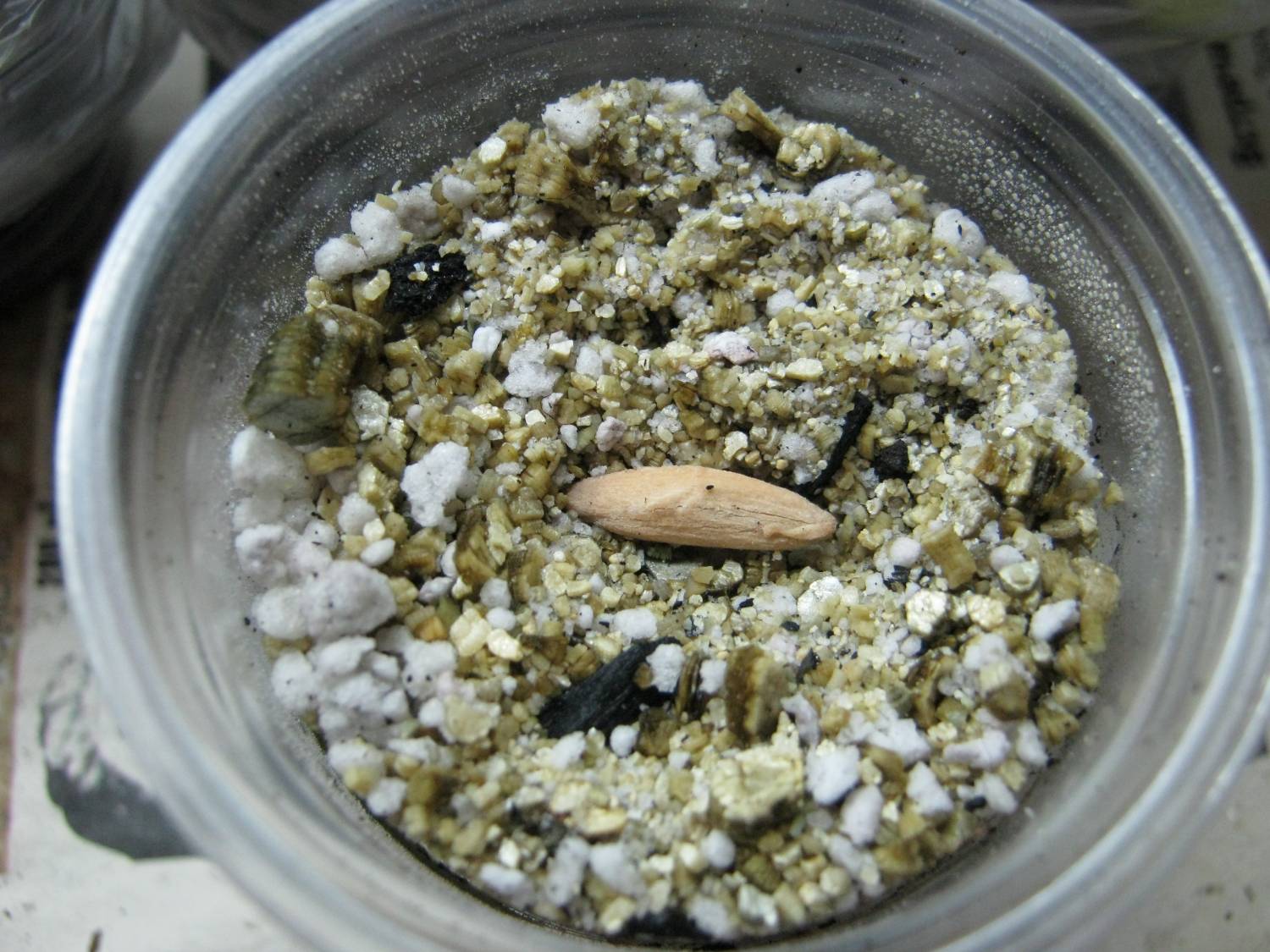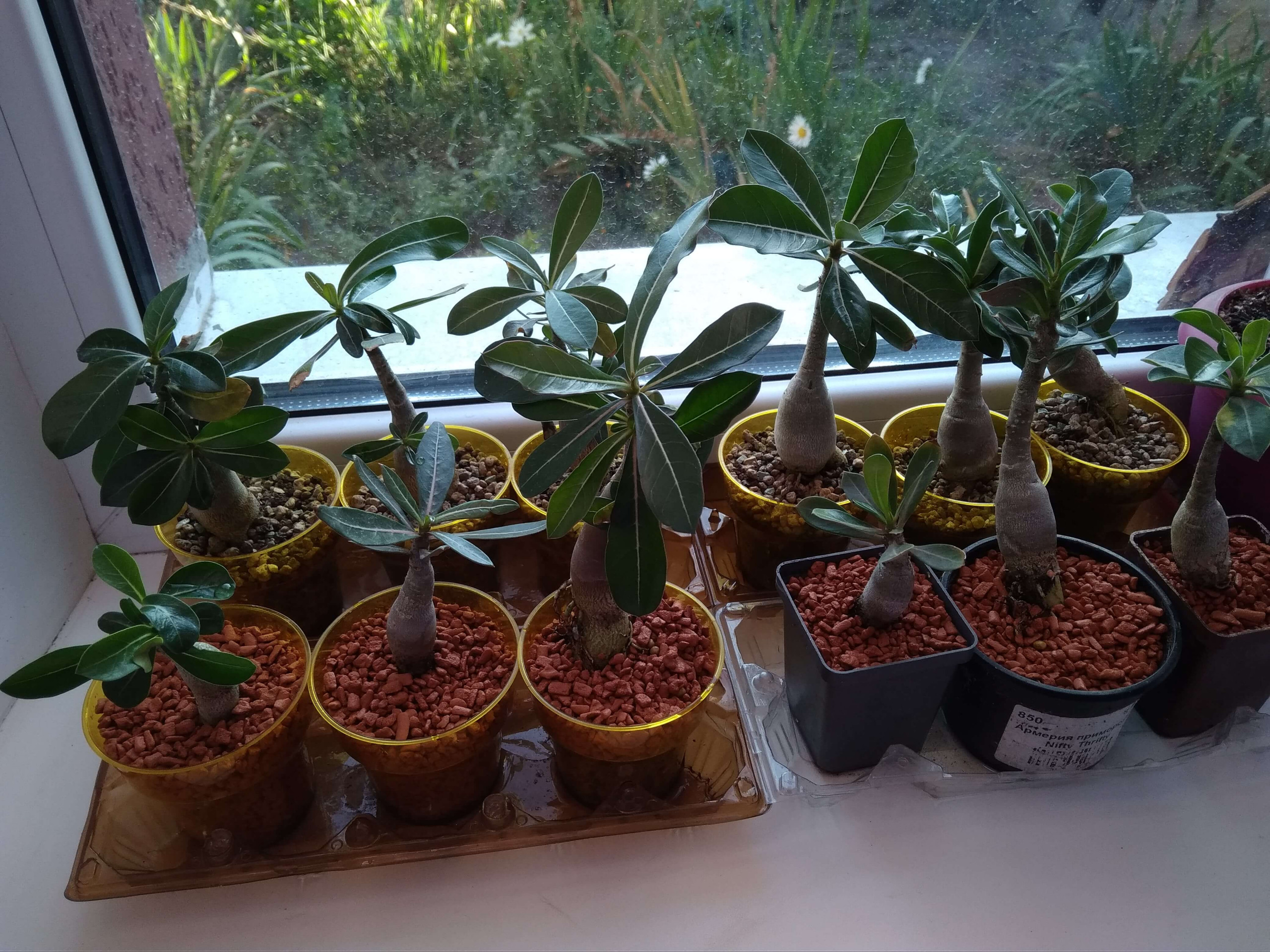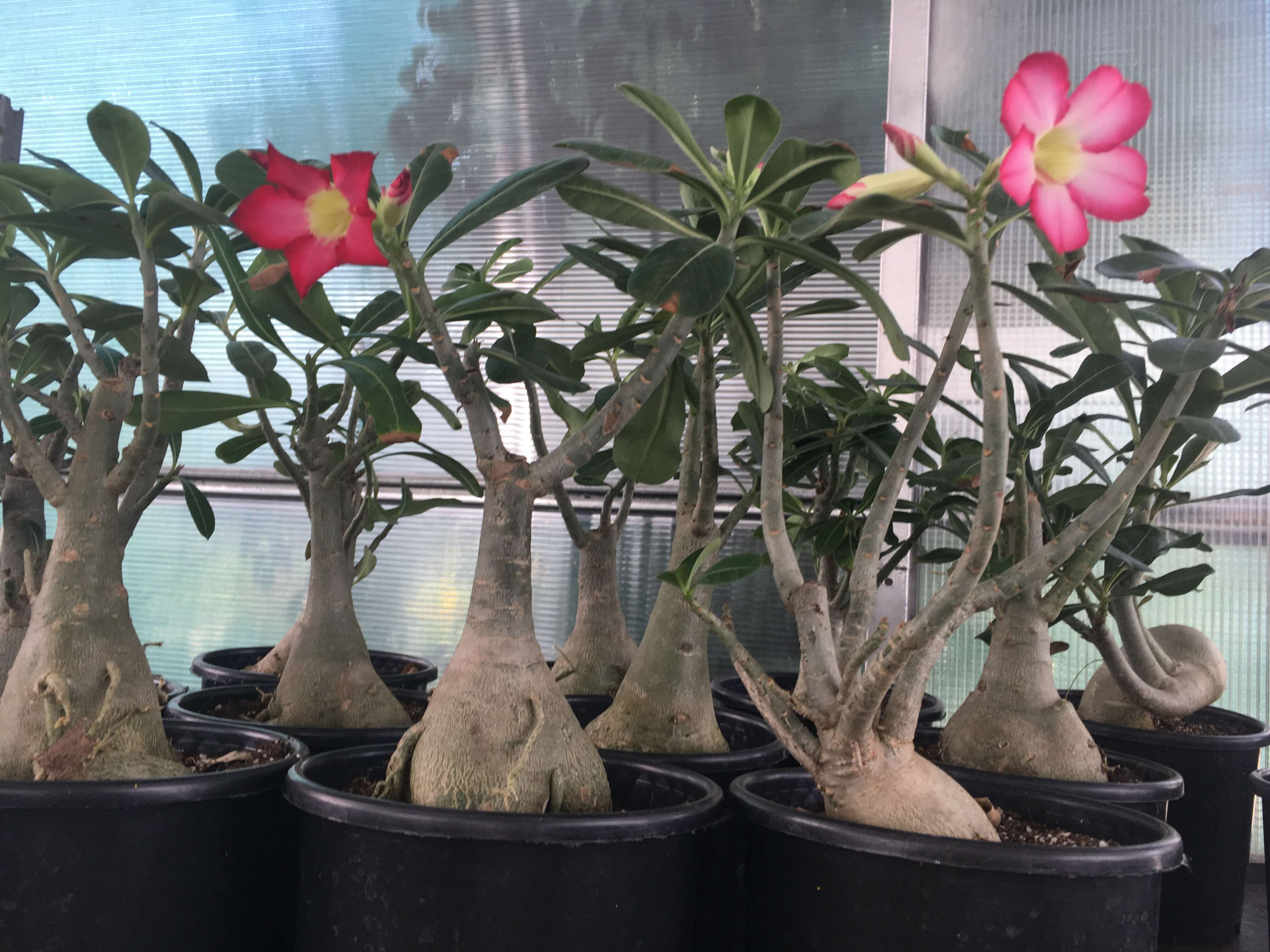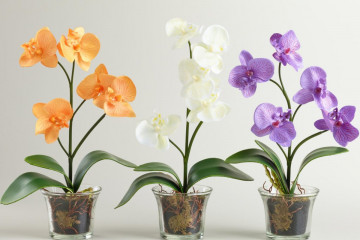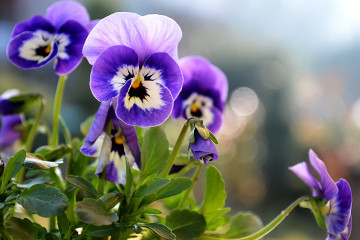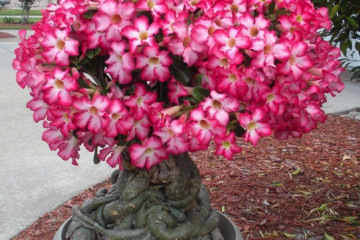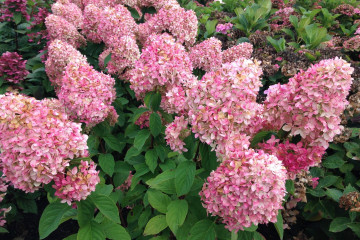Suitable primer for adenium - preparation
Content:
An elegant decorative adenium is a decoration of a garden or a home flower garden. Unpretentious to care for, this representative of the flora needs a high-quality substrate, rich in all the necessary minerals. But it is important to initially choose the right soil for adenium, only in this case the plant will be strong, healthy and attractive.
What kind of soil does adenium like
Despite the fact that the flower came from the tropics, it cannot be classified as picky and capricious. The main land on which it grows in the wild is rocky, poor soil. That is why it can grow without problems in midland gardens and indoor pots.
But the following requirements should be met:
- The soil for adenium should be loose.
- To provide the roots with a continuous supply of oxygen, a baking powder is added to the ground, the recommended ratio with the soil mixture is 1: 1.
- Acidity is neutral. The pH is in the range from 5.8 to 7.
Component composition
Properly selected soil for adenium is very important for good growth: its composition includes coconut soil, charcoal, perlite, vermiculite.
In its homeland, this plant is accustomed to poor soils, so you should not abuse organic elements, they will cause root burns.
The value of the components
To make adenium feel comfortable, it is important that the soil mixture for it includes three groups of components:
- Coconut substrate and leafy soil are introduced for nutrition.
- Baking powder is perlite, sand or vermiculite.
- The neutral components are: pumice, charcoal, zeolite.
Baking powder perlite is environmentally friendly, available. It will well protect the roots of adenium from the negative effects of temperature changes. Vermiculite retains moisture well, which reduces the amount of irrigation, is rich in minerals (iron, magnesium, aluminum, calcium).
The coarse sand perfectly mimics the soil that succulents are accustomed to in the wild. However, before adding to the container to the adenium, it must undergo mandatory disinfection.
Charcoal helps protect the plant from bacteria and fungus, lowers the acidity of the soil, but gradually leads to its alkalization.
Soil selection rules
It is necessary to figure out what kind of land is needed for adenium.
Existing soil options
Stores offer several suitable options.
The simplest is a commercially available flowering plant mixture. You can buy it in all shops specializing in gardening goods. However, such a composition should not be used ready-made. As a rule, it is dense, does not pass air well enough and is not suitable for a succulent. It is improved by adding baking powder.
The second option is a soil mixture for succulents. The components and the pH level are optimal, however, the composition needs to be sterilized before transplanting adenium. The disadvantage of this soil is its expensive price and rarity, you cannot find it in every store, you may have to make an order.
Coconut substrate, pre-enriched, can also be used as a substrate for adenium transplant.Coco-soil is already disinfected, air permeable, has a suitable pH level.
Finally, it is permissible to transplant the succulent into deciduous-humus soil. They buy it or mix it with their own hands, adding baking powder and coconut substrate. Before you "populate" the succulent, the mixture must be sterilized.
The soil for adenium for planting outdoors may be poor in mineral components, but always loose. Therefore, before planting a seedling, the soil in the selected area must be improved by adding sand or perlite to it.
You can prepare the soil for adenium at home yourself. There are such composition options:
- Ready-made soil mixture for cacti, baking powder and river sand (proportion 5: 4: 1).
- Peat, garden soil, baking powder (5: 3: 2).
The earth dug under a linden or birch tree is best suited for a succulent.
Specificity of preparation
The specific composition of the soil for adenium depends on the climatic conditions in which the succulent will grow. If the planting of a succulent is carried out for its cultivation in an apartment, where it is always warm and light, then it is worth choosing a nutritious ready-made mixture, into which it is necessary to add a baking powder (proportion 1: 1).
Growing at a temperature of +22 .. + 25 degrees involves the use of such a composition: soil mixture for succulents with coconut substrate and baking powder (ratio 1: 1: 1). Charcoal must be added to such soil.
If, after transplanting, the plant will be at temperatures up to +20 degrees and lack light, then it is better to make a choice in favor of poor soil, which, nevertheless, should allow air to pass through well.
How to sterilize soil
There are several ways to disinfect the ground before replanting adenium in it. The simplest is roasting in the oven. The soil (without baking powder) is spread in a thin layer on a baking sheet, placed in the oven (mode - 15 minutes at a temperature of 200 degrees). Then you need to wait for the soil to cool and transplant adenium into it.
Calcining in a water bath is another easy-to-implement method. A pot of water is placed on the gas, a baking sheet is placed on top with soil distributed over it. The duration of exposure is 60 minutes.
Using a microwave is a modern method. The soil is distributed in "portions", each placed in baking bags. You need to select the "Warming up" mode, set the timer for 4 minutes.
A solution of potassium permanganate is also a simple method. A light pink liquid is prepared, after which the entire surface of the soil is abundantly irrigated. You can replace potassium permanganate with special agents like Fundazol.
An overview of the main mistakes
Many growers, even with some experience, are convinced that moisture is the key to the growth of their green pets. This does not apply to adenium. This succulent plant needs dry soil that has not been enriched with organic complexes. It does not need to be poured, a guest from the tropics will calmly survive the drought. But it will die if it gets into conditions of high humidity.
It is impossible to include sphagnum in the soil mixture.
Other features:
- Diseases of adenium can be provoked by increased acidity of the soil.
- Dense soil is the main cause of root decay and the early death of a plant.
- If the soil is overly rich in nutrients, the leaves will grow to the detriment of flowering.
How to deal with the old land
After transplanting the plant, there will be soil that cannot be used for indoor plants. Even those growers who defended the water before watering, still could not protect the plant from a slight ingress of chlorine and lime. Gradually, they accumulated in the soil, making it unfavorable for "green pets". In addition, the old substrate inevitably contains bacteria and fungi, which can be detrimental to flowers.
That is why it is recommended to throw away the old soil after transplanting. If you are very sorry to part with it, you can add it to a street flower bed, but it will not bring much benefit there.
If you choose the right soil, then the succulent adenium will delight its owner with an amazingly beautiful flowering. This unpretentious plant does not require any special knowledge, but it is important that the soil is light and loose.

